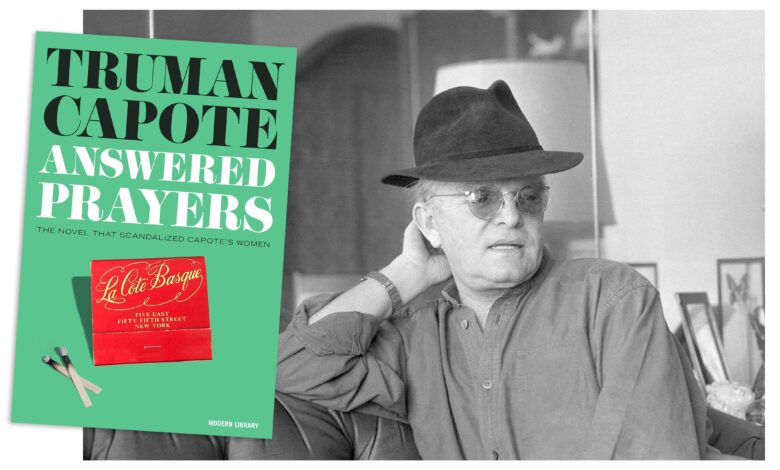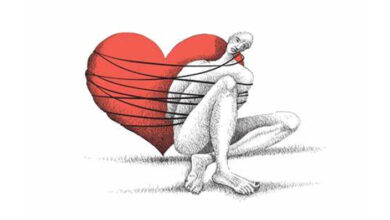The Enduring Mystery of Truman Capote’s Answered Prayers

When Truman Capote died of liver disease complicated by multiple intoxications in Bel Air in 1984, the author still had not completed Answered Prayers, the “magnum opus” he had been touting for 26 years. It was “going to do to America what Proust did to France,” the writer told one of his swans, Marella Agnelli, in one of his many conversations about his alleged masterpiece. He described it to friends, read aloud from it for small audiences, and even pressed the bulk of it into a friend’s hands—at least, that’s how it seemed. But after Capote died and no completed book was found—this, after a $1 million advance, three extensions, and over a quarter century of alleged work—those who stayed loyal to the writer through the “Côte Basque” debacle confronted the possibility that they, too, had been manipulated by the author.
But how much of Answered Prayers was actually found? Which society women did Capote write about in the novel? And what are the chances that through the heavy haze of drugs, alcohol, Studio 54 distractions, and painful estrangement from his beloved social circle, the author actually finished the book? In anticipation of the Feud: Capote vs. The Swans finale “Phantasm Forgiveness,” we explore those subjects, as well as how Capote ended up going to auction eight years ago.
How much of Answered Prayers was found?
Capote’s journals reveal that Answered Prayers was to be divided into seven chapters, but it appears that Capote only drafted four of them—three of which were excerpted by Esquire, and one of which was published by VF in 2012 shortly after its discovery.
One chapter was the infamous “La Côte Basque, 1965” the thinly veiled filleting of Capote’s high-society friends, most of whom dropped him the minute the excerpt was published.
Another chapter, “Kate McCloud,” was reportedly modeled “on Mona Williams, later Mona von Bismarck, another oft married socialite friend of Truman’s whose cliff-top villa on Capri he’d visited,” according to Sam Kashner’s 2012 feature for VF. “Of Mona’s five husbands, one, James Irving Bush, was described as ‘the handsomest man in America’ and another, Harrison Williams, as ‘the richest man in America.’” A third chapter, “Unspoiled Monsters,” chronicles a gay hustler who beds men and women alike if they can further his literary career. The fourth chapter, published exclusively in VF, is titled “Yachts and Things.” It recalls a trip abroad between a narrator believed to be based on Capote and a character who, Kashner guessed, could be a stand-in for The Washington Post’s late publisher Katharine Graham. (In the story, everyone seems to do hashish.)
Capote told potential readers that his book would be full of thinly veiled characters from his real life—and seemed to thrill in the danger of it all. “He couldn’t stop talking about his planned roman à clef,” Agnelli said. “He told People magazine that he was constructing his book like a gun: ‘There’s the handle, the trigger, the barrel, and, finally, the bullet. And when that bullet is fired from the gun, it’s going to come out with a speed and power like you’ve never seen—wham!’”
So, what happened?
A lot. Two weeks after signing his contract for Answered Prayers with Random House in 1966, Capote’s In Cold Blood was published—resulting in a kind of fame and proximity to privilege that suddenly trumped sitting at a typewriter. Capote, then 42, closed out the year by hosting his legendary Black and White Ball, signaling his speedy ascension to the top tier of Manhattan society. By the late ’60s, Capote considered Lee Radziwill, the sister of Jacqueline Kennedy Onassis, one of his closest friends.
Deadlines came and went. Capote’s unfinished novel became so legendary that, in 1979, the writer published an essay in Vogue attempting to explain the decade-plus-long lag since his last book.
For four years, roughly from 1968 through 1972, I spent most of my time reading and selecting, rewriting and indexing my own letters, other people’s letters, my diaries and journals (which contain very complete accounts of hundreds of scenes and conversations) for the years 1943 through 1965. I intended using much of this material in a book I had long been planning, a variation on the nonfiction novel. I called the book Answered Prayers which is a quote from Saint Therese. […]
In 1975 and 1976, I published four chapters of the book in a magazine, Esquire. This aroused anger in certain circles, where it was felt I was betraying confidences, mistreating friends and/or foes. I don’t intend to discuss this; the issue involves social politics, not artistic merit. I will say only this: all a writer has to work with is the material he has gathered as the result of his own endeavor and observations, and you cannot deny him the right to use it. Condemn, but not deny.

